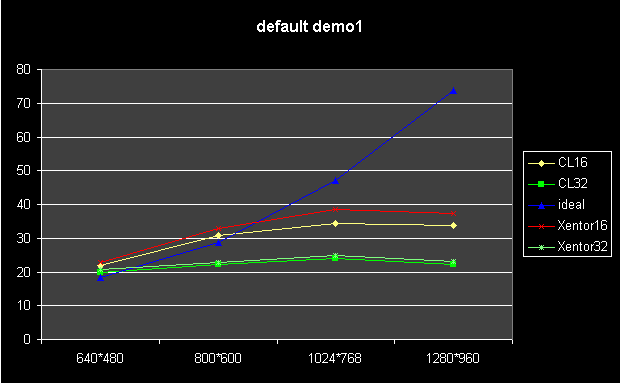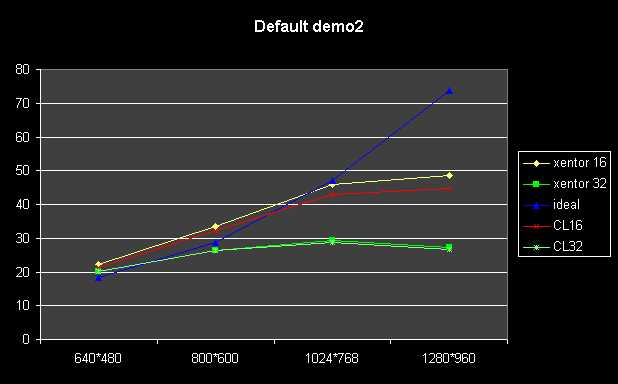System specs:
Abit BP6 Mainboard
Dual Intel Celerons 400Mhz
9.1 GB IBM UDMA66 2MB cache Hard disk
Xentor 32, 3D Blaster TNT2 Ultra (3DB)
128 MB 100Mhz SDRAM
Creative Labs Sound Blaster Live!
Asus 40X CD-Rom
Windows NT4.0 SP5
Quake III 1.08
Detonator 2.08 reference drivers
Well, we all know the TNT2 chip by now. If not, maybe you should read Beyond 3D's Xentor 32 review. But are there any differences between the Xentor and the 3DB? Yes, the Xentor's default core speed is 175/183Mhz (core/memory) and the 3DB runs at 166/183.
For our testing, we are using Quake III Arena. Demo 1 is used more
for stressing the 3D accelerator while Demo 2 is for the CPU. Let's get
down to the results.


Here we see that the Xentor performs better than the 3DB. This, of course, is due to it's higher clock speed. But this difference is mostly seen at 16-bit. Why is that? The key difference here involves bandwidth. To understand this, lets use an illustration we've used before. Say you're a company running a machine that builds parts. Now this machine can build parts just fast enough to keep the conveyor belt that moves the finished parts filled. Now what if the company was to get a faster machine, but not a faster or wider conveyor? Well, because the conveyor can only hold so many finished parts, the machine can only build so many. So even though your new machine is faster, it isn't really useful because it has to slow down and wait for the conveyor. This is exactly what is happening here. Both boards have a memory clock of 183 MHz, giving them equal bandwidth. However, the Xentor 32 is a faster machine because it's core clock is higher than that of the 3DB. When using 32-bit color, all of that bandwidth is used up, so they produce the same amount/results. However, in 16-bit this is not so because more bandwidth is available and the Xentor is the faster machine, so it can produce more. So in other words, both machines effectively operate at the same speed in 32-bit, because they can both only put so much onto the conveyor. But when dealing with smaller 16-bit parts, they can output a lot more, so the faster Xentor has the upper hand due to it's higher clock.
